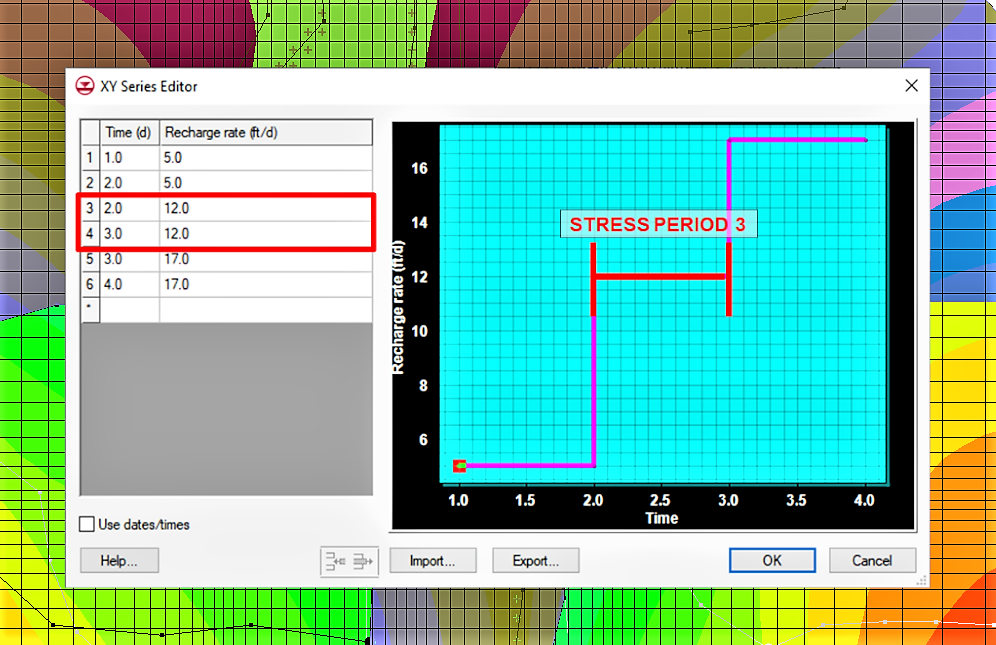We use cookies to make your experience better. To comply with the new e-Privacy directive, we need to ask for your consent to set the cookies. Learn more.
Utilizing the Transient Step Function Method
The Groundwater Modeling System (GMS) provides tools for working with transient MODFLOW simulations. When working with transient dataM in a MODFLOW model, it is important to understand stress periods and how GMS calculates their values. There are two different methods you can use to define the values for a stress period: the continuous time series method, and the step function method. This blog post will cover how to input the data for a stress period in the XY Series dialog so that GMS will calculate their values correctly.
Transient MODFLOW simulations use time intervals called stress periods to define the values of transient stresses such as pumping rates, and river stages. The values for stress periods are entered in the XY Series dialog, which is opened from the Attribute Table dialog. For a continuous time series, you need to enter only one data point per time step. When you enter only one value per time step, GMS assumes that the value continues to increase through the stress period, creating a straight line connecting the two points for a smooth transition. But because GMS needs a constant value for each stress period, it will take an average of the starting values of that particular stress period and the starting value of the following stress period.
The step function method tells GMS that there is only one value for each stress period, rather than a continuously increasing value. To input data in the XY Series dialog so that GMS knows that there is only one constant value through the entire stress period, you’ll need to enter both a start value and an end value. The figure below shows an example of the format to use.

As you can see in the above figure, you need the end value of a stress period to match the start value of the following stress period. This creates "steps" in the data, telling GMS to read a constant value through the entire stress period, rather than having a gradual increase from beginning to end.
Head over to GMS and try creating a step function for your transient MODFLOW model today!


